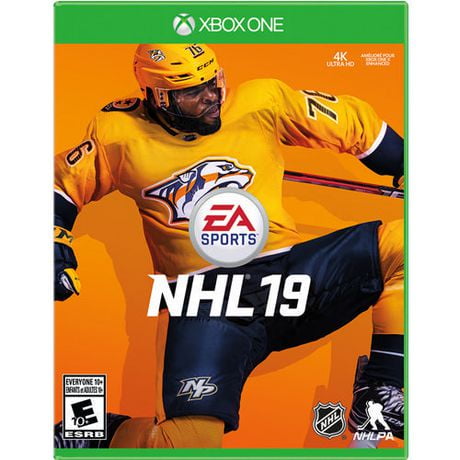

Be a GM, which I'll delve into further in a bit, doesn't have quite the staying power of other sports game franchise modes. The rest of the modes are functional if colorless. If you can get a good group of friends together for it, the EASHL can really increase NHL's longevity.

The EASHL has a dedicated fanbase, and that combined with a desire to make NHL an eSport ( no, seriously) has earned the mode most of EA Canada's limited resources. It's bolstered by a variety of class roles, including Sniper, Power Forward, and Playmaker - all with individual strengths and weaknesses. Rather than controlling the entire team, you are responsible for your own positioning and movement and once you get the hang of it, it starts to feel like an actual rec league hockey game. NHL's strengths are best reflected in the EA Sports Hockey League - a team-based 6v6 mode in which each person takes on an individual role, whether it be center, winger, or goalie. But once you get past NHL's rather steep barrier to entry, it becomes markedly less frustrating. The art of scoring on a one-timer, as well as the difference between the various formations, is apt to be lost on first-time players. The On-Ice Trainer - an overlay that shows you shot angles and offers control prompts - is a decent visual prompt, but it's not quite enough. EA Canada provides little in the way of tutorials and unless you have at least a passing knowledge of hockey tactics, you are going to have a hard time scoring. Oddly enough, though, NHL is probably the hardest sports sims to learn. Matches usually take only about 15 minutes games are fast and action-packed, and the objective is simple: Put the puck in the back of the net. In that, hockey is well-suited to gaming. And when you score a goal it's thrilling: As in real life, the goal horn blares, music plays, and the players hug and make out (I only made one of those things up). The strategy is predicated less on patiently cycling the puck and looking for openings and more on foring madcap breakouts, taking big shots from the point, and dangling the puck around the goalie: Not necessarily true to the sport, but pretty fun for a videogame. NHL 17 is a test of skill, reflexes, and quick decision-making, with players getting crushed by big hits if they are a second too slow in getting rid of the puck. So while the NHL 94 controls are still there if you want them, NHL really aspires to be more of a simulation at its core. These days, NHL is still fast and exciting, but it's also extremely complicated: One wrong move and you stand a decent chance of giving up a breakaway chance. We're a long way from the days of NHL 94, which struck the sort of satisfying balance between arcade and simulation action that only 16-bit games could manage. Here's what new players should expect from EA's venerable hockey sim. The rest of NHL 17's additions are a tad spottier, but I'll get to those in due time.


Sadly, I couldn't move the Stars back to Minnesota, but Seattle was available. It is accompanied by a handful of enjoyable bells and whistles, including the ability to set your own goal song and spotlight effects. This is the first time I can think of that it's possible to relocate a team in NHL, bringing it roughly up to par with NBA 2K and Madden NFL. So that was the first item on my agenda when I fired up NHL 17: Move the Stars. They were my first hockey team and while the Wild have since filled the hole in my heart, I still wince a little whenever I see them in Dallas. It's been 23 years, but the departure of the North Stars from Minnesota still kind of hurts.


 0 kommentar(er)
0 kommentar(er)
